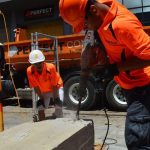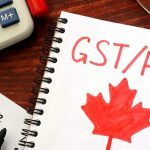The Canada Carbon Rebate 2025 is one of the most important financial relief programs introduced by the federal government, designed to help households manage the combined pressures of inflation, energy costs, and environmental taxes. Administered by the Canada Revenue Agency (CRA), this rebate provides tax-free quarterly payments to eligible families and individuals across select provinces.
In 2025, millions of Canadians will benefit from these direct deposits, which aim to offset the cost of carbon pricing while promoting greener, more sustainable choices. Depending on family size and province, eligible recipients can receive up to $1,120 per year, offering consistent financial support throughout the year.
Understanding the Purpose of the Canada Carbon Rebate
The main goal of the Canada Carbon Rebate is to ensure that households are not unfairly burdened by federal carbon pricing policies. Since fuel and energy use contribute to higher costs for consumers, the rebate functions as a compensatory measure that redistributes the collected carbon tax revenue back to Canadian residents.
This system ensures that families, especially those with modest incomes, can maintain their quality of life while the country transitions toward a low-emission future. In doing so, the government encourages Canadians to adopt cleaner energy practices without compromising household stability
How the CRA Carbon Rebate Works
The Canada Revenue Agency (CRA) administers the carbon rebate payments automatically. Canadians do not need to apply or fill out separate forms. Instead, the CRA uses information from each individual’s annual income tax return to determine eligibility and payment amount.
The rebate is paid out quarterly, typically in January, April, July, and October, directly to the recipient’s bank account or by mailed cheque if direct deposit is not set up. Payments are completely tax-free, meaning they will not impact other government benefits such as the Canada Child Benefit (CCB), GST/HST Credit, or Old Age Security (OAS).
Canada Carbon Rebate 2025: Eligibility Criteria
To qualify for the Canada Carbon Rebate 2025, individuals must meet the following key conditions:
- Be a resident of an eligible province on the first day of the payment month.
- Have filed their 2024 income tax return with the CRA, even if they had no income to report.
- Be at least 19 years old, or if under 19, be living with a spouse, common-law partner, or child.
- Have updated information such as address, marital status, and dependents with the CRA.
Eligible provinces include Alberta, Ontario, Saskatchewan, and Manitoba, where the federal fuel charge applies.
CRA Carbon Rebate Payment Schedule for 2025
The CRA has confirmed that Canada Carbon Rebate payments will continue on a quarterly basis in 2025. The first payment round is expected on January 15, 2025, followed by subsequent installments in April, July, and October.
Below is the detailed payment chart for major provinces:
| Province | Single Adult | Couple | Family of Four | Next Payment Date |
|---|---|---|---|---|
| Alberta | $340 | $680 | $1,120 | January 15, 2025 |
| Ontario | $300 | $600 | $960 | January 15, 2025 |
| Saskatchewan | $360 | $720 | $1,100 | January 15, 2025 |
| Manitoba | $330 | $660 | $1,020 | January 15, 2025 |
The differences in rebate amounts are based on each province’s carbon pricing structure and cost-of-living factors.
How the Rebate Amount Is Calculated
The carbon rebate calculation depends on household size and province of residence. Each eligible adult receives a base payment, with additional supplements for a spouse, partner, or dependent children.
For example:
- A single individual in Ontario may receive around $300 annually.
- A couple can receive $600, while a family of four may receive $960.
- In provinces like Alberta or Saskatchewan, where fuel costs and carbon pricing are higher, families can receive over $1,100 annually.
These payments are intended to fully or partially offset the increased fuel and energy costs associated with the federal carbon tax.
Why Some Provinces Receive Higher Payments
The Canada Carbon Rebate varies from province to province because not all regions are subject to the federal carbon pricing system. Provinces with their own carbon tax programs, such as British Columbia and Quebec, manage their own systems separately.
In contrast, provinces like Alberta, Saskatchewan, Manitoba, and Ontario fall under the federal framework, which is why residents in these areas receive direct CRA payments. These differences reflect each province’s energy consumption patterns, carbon emissions, and local fuel pricing structures.
Canada Carbon Rebate 2025: Benefits for Families
One of the greatest advantages of the carbon rebate is its direct support for households, especially those with lower or moderate incomes. The payments are structured to ensure that families receive a fair share of the revenue collected from carbon pricing.
Key benefits include:
- Tax-Free Payments: No deductions or clawbacks on other federal benefits.
- Quarterly Distribution: Steady income flow across the year.
- Automatic Enrollment: No need for separate applications or renewals.
- Family Supplements: Extra payments for spouses and dependent children.
This structure ensures that families with children benefit the most, reducing their financial pressure from increased energy and fuel expenses.
How to Maximize Your Carbon Rebate Benefits
To ensure smooth and timely payments, households should take a few proactive steps:
- File Taxes on Time: The CRA determines eligibility based on your filed tax return. Missing the deadline may delay your rebate.
- Set Up Direct Deposit: This ensures you receive payments faster and safely.
- Update Family Details: Notify the CRA of any changes in marital status, dependents, or address.
- Check Your CRA My Account: Log in regularly to confirm your payment dates and amounts.
- Keep Records: Maintain copies of your tax return and any CRA correspondence.
By following these steps, Canadians can make sure they receive their full entitled rebate without interruptions.
Supporting Sustainability Through Financial Relief
Beyond its financial advantages, the Canada Carbon Rebate 2025 plays a vital role in the country’s environmental strategy. By returning carbon tax revenue directly to citizens, the government encourages Canadians to make eco-friendly decisions—such as using public transport, switching to energy-efficient appliances, or reducing fuel consumption.
The rebate system reflects a “polluter pays” principle, where carbon emissions are taxed but households are compensated, ensuring that cleaner living remains accessible to all income levels.
CRA’s Efforts to Ensure Transparency and Efficiency
The CRA continues to emphasize transparency and fairness in administering the program. Payment details, amounts, and eligibility rules are published on the official Government of Canada website, ensuring that Canadians can easily verify their entitlements.
In 2025, additional online tools are expected to make it even simpler for taxpayers to track rebate payments and update their details. This digital approach aligns with the CRA’s ongoing effort to modernize public service delivery.
The Bigger Picture: Canada’s Commitment to Climate and Affordability
The Canada Carbon Rebate is part of a broader national framework designed to meet the country’s net-zero emissions goal by 2050 while keeping affordability in check. By combining environmental responsibility with direct financial relief, the government ensures that the path toward sustainability remains fair and inclusive.
For many Canadian families, the 2025 rebate serves as both a financial lifeline and a symbol of progress—proof that climate policy and economic stability can work hand in hand.
FAQs About Canada Carbon Rebate 2025
1. How much will I get from the Canada Carbon Rebate in 2025?
Payments vary by province and family size. A family of four could receive up to $1,120 annually, while single adults may get around $300–$350.
2. When is the next CRA carbon rebate payment?
The next payment is scheduled for January 15, 2025, followed by April, July, and October installments.
3. Do I need to apply for the rebate?
No. The CRA automatically issues payments to eligible taxpayers who have filed their income tax return.
4. Which provinces are eligible for the carbon rebate?
Eligible provinces include Alberta, Saskatchewan, Manitoba, and Ontario—where the federal carbon pricing system applies.
5. Is the carbon rebate taxable income?
No. The Canada Carbon Rebate is completely tax-free and does not affect other federal or provincial benefits.











